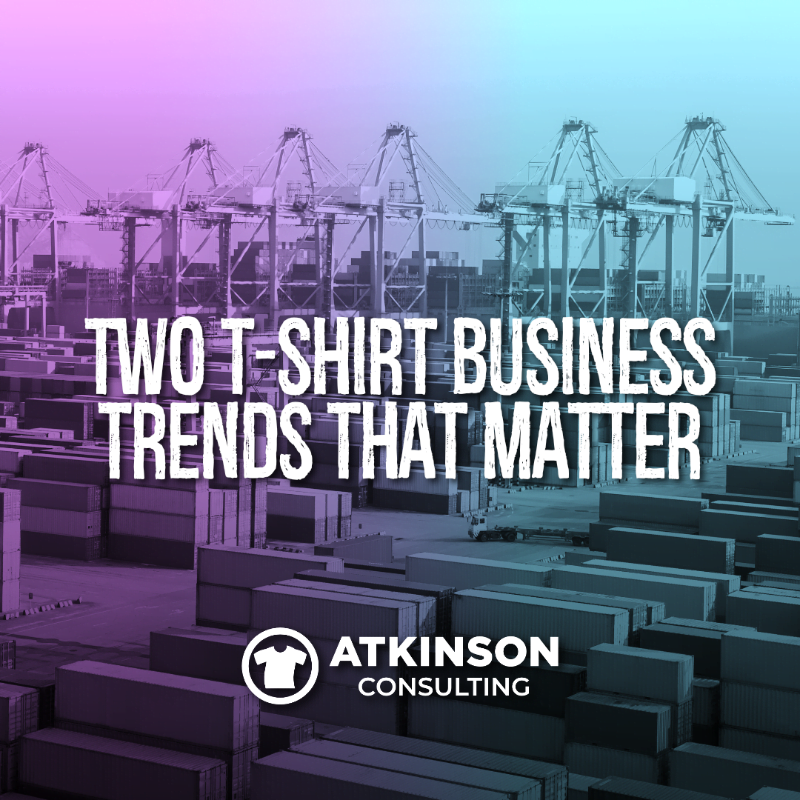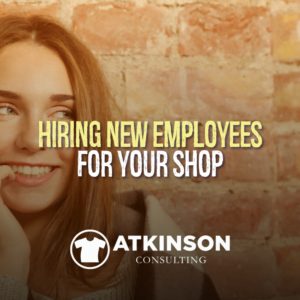When you think of business trends what immediately comes to mind?
Movement?
Tendencies?
Fads?
I think trying to predict business trends is akin to almost being a weatherperson on tv. “45% chance of rain tomorrow.” Will they be right? I don’t know, but you might pack an umbrella just in case.
So I’ve dug out my Ouiji board, sifted through the tea leaves, consulted the Oracle, and have come up with some trends that I believe will stick through the rest of the year, if not until next year as well. Let’s take a look.
First Trend: Supply Chain Disruption
Sorry folks, this one isn’t going away soon. In fact, I think in some cases it might even be accelerating. The problem is that there is a cavalcade of pandemic-related challenges that are adding up and seem to be only getting worse.
Shipping Container Shortage
There is a worldwide shipping container shortage. That sucking sound you hear is empty containers headed to Asia to be filled with product. Normally, containers are shipped, then emptied, then filled, then shipped again. Part of the challenge we face right now is that due to the supply chain shortages and frantic need to fill orders as parts of the world have opened back up, containers are being sent overseas.
Not to mention the global fleet of container ships that are parked offshore in ports everywhere, waiting patiently to unload. California inbound ships are taking six times longer to just dock and start the process.
Why is this an issue?
These ships have those hats you are waiting on for that team order. The components of the new screen printing press that you bought five months ago. Maybe the ingredients for that ink or other consumables you need.
The Big Freeze
Plus there was that big freeze in Texas in February. Many of the ingredients needed to make the ink, emulsion, chemicals, and other common elements we use in this industry didn’t get produced. This produced a massive backlash that we are still feeling today.
This becomes a domino effect when demand outstrips supply. Which customers get served first? The ones that pay more. When the ingredients to the products we use cost more, prices for those items naturally get passed on to the buyers.
Right now the effect is so huge it is almost like fresh fish and market prices. The cost of items that you use every day in your shop can change daily.
Empty Shelves + Surging Demand
The next big issue you’ve seen before. Remember how difficult it was to get toilet paper at the beginning of the pandemic?
When workers everywhere were forced to stay at home, suddenly every household needed more toilet paper. Office bathroom trips were replaced with more household frequency. Most stores only keep about a day or two’s worth of inventory on hand. In two seconds flat, store shelves were empty as everyone wanted the same thing. Manufacturers couldn’t make the product fast enough.
Now that a good chunk of the economy has reopened, we are seeing the same effect with everyone in the industry trying to get the same items at the same time. Because of the effects of COVID, many warehouses were not as stocked, and the apparel manufacturers are forced to ramp up faster production just to get back to an even level. This is why you see such volatility when you check inventory levels online. One minute they have stock, the next it is zero.
Trend Two: Customer Behaviors
One trend that won’t be reversed is consumers frequently shopping online. People like the convenience and ease of a webstore. That is, of course, that the webstore is built with a frictionless experience.
Because more shoppers are used to quality built experiences online, anything less is met with an instant reaction. They simply click and go somewhere else.
To drive that eCommerce smart business owners have spent the time idle during the COVID lockdown amping up the viability of their online store functionality and marketing.
Content Through Storytelling
I’m a big fan of human-to-human marketing, as I think it resonates best with the end-user. People buy for many reasons, but if they can connect with a great story to a product, it is almost unfair.
Video is king. But only if it is linking back somehow to what you are trying to do with your store. This is why you see so many companies moving to use videos on Instagram or Facebook or TikTok.
Research is all handled online. Stop and think about what you do. When you hear about a new product, restaurant, movie, or event…what is your first go-to step?
You look it up online.
People are searching for something familiar with the product research and Google searches they perform. If they can find a great story that drives that connection home, that is when you hear that cash register ring.
Connectivity with Social Selling
A growing trend you are going to see more of in the coming months is more tools to sell on social media platforms.
Instagram has one-click shopping embedded with Reels, and TikTok recently partnered with Shopify to drive customers to stores.
Buying something through a social media app seems to be trending heavily with people ages 25-35 years old., and those that are more mobile tech-savvy.
Retargeting
Have you ever looked up something online, and then for the next few days everywhere you turn online you see that same product?
That’s retargeting. The company is hoping that by finding you and constantly showing you a reminder of the product that you will buy it. It’s a little creepy, in a stalker sorta way, but it is effective.
Here’s an interesting stat. 97% of the people who leave your website without buying anything will never come back. Retargeting pulls them back in.
The Need For Better Data
Let’s say that you have six online stores, and they are built for the local school district. Two for the elementary schools, two for the middle schools, and two for the local high schools.
Data and your customer’s behavior with these schools is the key to your success. Especially if you know each student’s name, address, and also grade in school.
As the kids get older and matriculate up through the grades in the schools, they will naturally need new and different apparel with each step. But it doesn’t have to shop there.
- What are their likes and dislikes?
- What have they purchased before?
- What are other kids in their school buying? Anything trending?
Compiling this data allows you to construct email drip marketing that is tailor to the individual choices, grade levels, and apparel types that the student might be interested in.
How accurate and well-built is your database for your customers?
What To Do
The two trends in this article are important, as I don’t think they are going away any time soon.
For inventory, make sure you have multiple sources for the goods you need for your company to use. Also, you might consider talking less about specific brands and more about the general attributes. For example, talk about a 5.5 oz 100% cotton t-shirt, and not a specific SKU.
For customers, you have to pay attention. Learn to separate the signal from the noise. Talk to them. Conduct surveys. Get feedback.
Things change constantly and you have to adjust.



